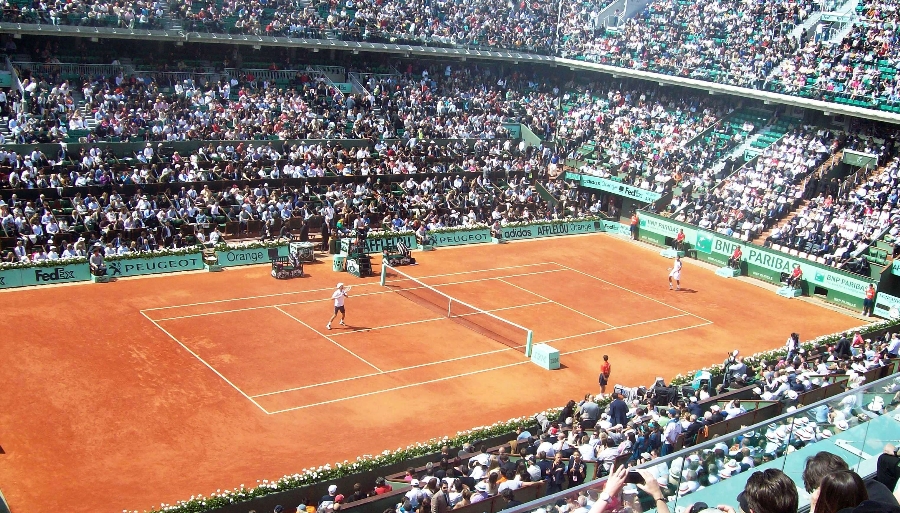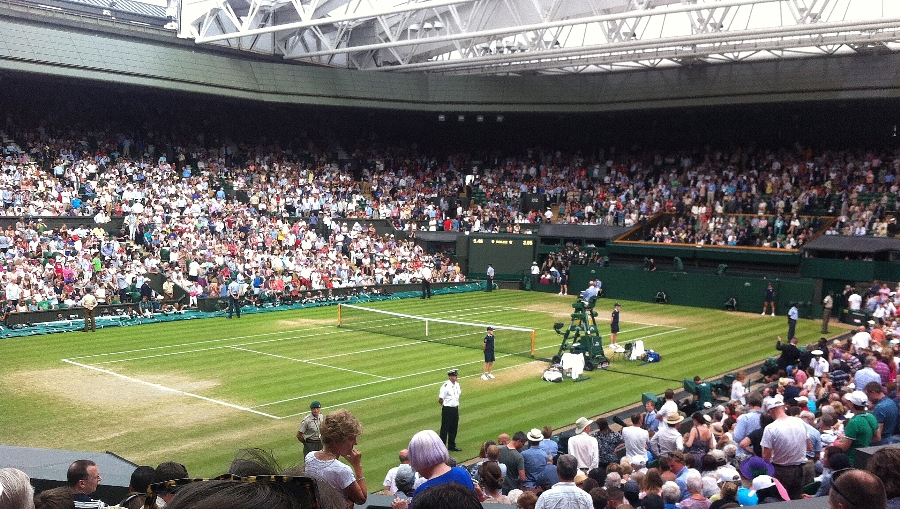It’s done. The unthinkable happened. No, I don’t mean that it’s unthinkable that Serbia led by the world’s number one player Novak Djokovic would defeat U.S.A led by number 20 Sam Querrey and number 23 John Isner in Davis Cup, but that the world’s number one ranked doubles team Bob and Mike Bryan twins would lose on Saturday to a doubles tandem composed of Nenad Zimonjic, and some guy named Ilija Bozoljac (many pundits nicknamed him “Bozo”) who is ranked number 1150 in the ATP doubles rankings, and a mere 335 in singles! But anyone who has watched the matches over the weekend and who has read about it is aware of the headline tidbits. So, let’s go beyond the doubles upset or the retrospective obvious.
I caught up with Jim Moortgat, an old friend who currently runs a tennis academy in Boise, Idaho where the tie took place. He resides in Boise, thus he attended the Davis Cup weekend and was in charge of the ball kids. Jim is a well-known figure amongst tennis coaches and circles at the national level. Since the late 1970s, Jim has been involved in tennis as a competitor for a few years, and since then as a coach at many levels, including a successful career as a college coach, and a 5-year stint with the USTA Player Development Program. Tennis is an essential component of his life, and coaching is his passion. I asked him to reflect on what happened during the weekend, and below is what he had to say.
Jim what was the most striking memory of this Davis Cup tie for you?
JM: What struck me most actually happened before the weekend, and it has to do with Novak Djokovic. But before I get to that, let me add this: we live in a soft culture in the USA, and when you add the tennis arena into it, it becomes even a softer culture. There are no other sports where the player “drives the bus” so to speak. Everything revolves around what the player wants, the player tells the coach what he wants to work on, the coach is the player’s employee in a sense, and the coach can’t “bench” the player for bad play as is the case in many sports. American professional tennis players subscribe fully to this notion.
Then, you have a player like Novak Djokovic, head and shoulders above the rest of the players involved in the weekend. He is the earliest one to come to Boise to get used to the altitude. In Miami the week before, he stayed in the tournament longer than Isner, and lost in the same round as Querrey. Yet he gets to the site days before any Americans and starts training Monday night. He wants to run EVERY stadium stair here at Boise State stadium. To have access to the stadium, one has to get special clearance, and get the security personnel to open the doors. He actually takes the trouble to arrange all that, just so he can get in his necessary workout. I see this, and I am wondering what the American players are doing on Monday night wherever they are, but they are definitely not in Boise. Novak is out the next morning for practice again. If you want to be like everyone else than do what everyone else is doing. If you want to be #1 in the world, than be an outlier! That is the lesson to learn from Novak’s pre-weekend preparation. His training is very different from the Americans, both outside the top 20. We have a guy like Jim Courier at the helm who used to outwork everybody in his days, and yet there is not one American guy who works as hard as the other top guys.
That brings me to my next question: with all due respect and in all fairness to Jim Courier, how much influence the Davis Cup Captain has in the development of American players? To what end does the buck stop with him for this weekend’s loss?
JM: I am not sure how much of the blame/credit can be placed on the Captain. If there is blame, it certainly does not lie with Courier alone. Courier has the players for less than a week. He could demand that they come a bit earlier, but again, that goes back to what I was saying previously. The players drive the bus. Jay Berger is the head responsible of USTA Player Development program. Technically, he is Courier’s boss. All coaches in the program should demand more from the players, and in my opinion, they simply do not. When Courier was a player, the knock on him was that he did not have “enough talent”, similar to Ivan Lendl when he played. Yet, both of these guys rose to number one and overachieved through sheer determination, will, and pure hard work. Since 1968, this is the first time we have never had a player in the top 20. Perhaps we need to realize that “working hard” is also a talent, perhaps the most essential one. The buck stops with the governing body.
It seemed that the American’s hopes of defeating the Serbs rested on winning the doubles point. It was a massive upset win for the Serbs. What do you make of that?
JM: This relates a bit to the previous question’s comments, but before I get there, let me tell you a quick story. There are very few people that I really look up to with their tennis knowledge and the guy that shared the first-hand knowledge of this story was a friend of mine named Steve Smith from Tampa, Florida. Steve told me that long time ago, when Gabriela Sabatini was number two player in the world, she asked Jack Kramer to evaluate her game. Kramer bluntly told her that her serve was terrible and that she did not know how to play the court. He added that he would not help her because he felt that it would take a year of adjustments to add those aspects to her game. Sabatini replied that she was number two player in the world, so she must be doing something right. Kramer said that rankings had nothing to do with it, either you can or not. The implication was that she could either rest on her ranking based on a comparison to the players below her, or take the extra step.
Now, why do I bring this up? Because there are very few coaches, hardly any, who are willing to do what Kramer did, i.e. demand the best player to do something ‘more’ regardless of how well they do many other things compared to the players below them. They feel like leaving them alone on certain things is the safest way to go. Jim Courier fell into this trap during doubles. His team may well be the world’s best doubles team but on Saturday, the best doubles player on the court was Nenad (Zimonjic), and the second best one was his partner Bozoljac. Why? Because our team made them play well. Mike and Bob kept serving to Bozoljac’s backhand and he was on fire with the returns. In a crucial point in the first set, the Americans served to his backhand he once again hit a scorching backhand return winner. You would think that Jim Courier would notice that, but yet, they kept serving to his backhand and through his returns, Bozoljac’s confidence soared and he started serving and stroking the ball in a zone. Then comes late fifth set, and once again on a crucial point, another serve to the backhand and another return winner. When you are on the bench, even if you coach the number one team in the world, you have to demand more, still strive for perfection. That includes sometimes that the coach demand his team to do something out of their Plan A but one that will make the opponent uncomfortable and take them out of their zone. Courier and the Bryans never did that. As a result, their opponents who, under normal conditions, are not as skilled as the Bryans in doubles, found their perfect rythm and overachieved.
Any last thoughts?
JM: Yes, there is one more area where they overachieved, or we underachieved, depending on one’s perspective. The Serbians wanted it more than us. Their awareness of what a Davis Cup tie means was tremendous. On the bench, they had 18-20 people, always invested emotionally in the match, vocal and enthusiastic, creating extra energy for their players on crucial points. Djokovic was eating inside when the second set tiebreaker began, and he ran to the bench with his food to encourage and cheer his teammates because he knew how primordial that tiebreaker was to the outcome of the tie. The Serbians sure as heck knew who they were playing against and what was needed. In contrast, our bench was subdued for the most part, except on few important games and the extension of the fifth set tiebreaker, and we never had more than 10 people on our bench who were far less vocal than their counterparts. The tie was held at an 11,000+ seat arena. There were around 100 Serbians in the crowd, yet several times in the match, it felt like we were playing an away game. Our approach to Davis Cup paled in comparison to how the Serbs approached it.


